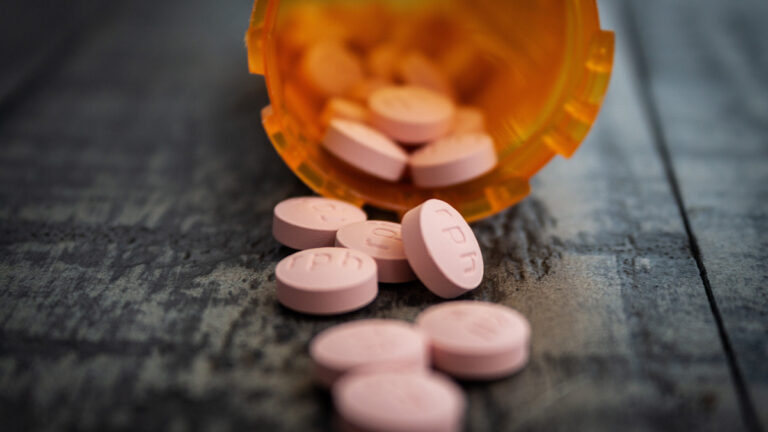Billions of dollars a year flow to U.S. hospitals through the federal prescription drug discount program known as 340B.
A Supreme Court case this summer briefly thrust the little known but highly controversial program into the spotlight. In 2018, the federal government cut payments to hospitals in the program, and a group of hospitals and trade associations sued.
Listen to this story here.
The court sided with the hospitals and rejected the payment cuts, but the unanimous opinion did little to address the controversy that has dogged the 340B program for decades: Who should benefit — providers or patients?
We asked 340B expert and Tradeoffs Research Editor Sayeh Nikpay to help explain how a program designed to help the neediest patients became so controversial.
Where did 340B come from?
By all accounts, 340B started with good intentions.
Congress created the program in 1992 to help hospitals and clinics that cared for large numbers of low-income and uninsured patients, including large public hospitals, AIDS clinics and community health centers. They did so by requiring pharmaceutical companies to give these safety-net providers big discounts on prescription drugs. The exact discount amounts are confidential, but government reports indicate they can range from 20 percent to more than 50 percent.
How does 340B work?
To understand 340B, it helps to follow the money.
Imagine someone needs a cancer drug that a drugmaker normally sells for $100,000. The company would have to sell that drug at a discount to a 340B hospital or clinic, so they might only pay $50,000.
But if a patient with insurance needs that same drug, the hospital or clinic can charge the insurance company or Medicare the full $100,000 and pocket the $50,000 difference. This is known as the “spread,” and 340B providers can use that money to help cover free medication for the uninsured or to pay for other operational costs.
Why is 340B so controversial?
Drugmakers and some policymakers argue 340B should more directly help low-income people afford prescription drugs instead of being routed through the hospitals and clinics. Others say giving discounts to providers inevitably trickles down to needy patients.
Recent growth in the program has made this argument even more contentious.
Hospitals have to apply to the federal government to enroll in 340B. When the program started in 1992, fewer than 3 percent of hospitals participated, and they tended to have many low-income and uninsured patients.
But the eligibility rules for 340B are broad, and by 2009, 13 percent of hospitals were in the program, with many of the newer hospitals serving far fewer needy patients. The following year, the Affordable Care Act allowed rural hospitals, cancer hospitals and others to join, regardless of how many uninsured patients they served.
By 2020, about 40 percent of American hospitals were getting discounts, and the program now accounts for $38 billion, or 7 percent of total U.S. drug spending.
The more insured patients a hospital has, the more money it can bring in through 340B. And even though hospitals with more insured patients are legally eligible to join the program (and can spend the money they bring in however they want), their proliferation in 340B has pushed drugmakers and some policymakers to accuse them of exploiting a loosely worded law to pad their profits without doing much to help low-income patients.
Hospitals counter that 340B discounts allow them to provide free care, open specialty clinics and offer additional services to complex patients.
What does the evidence say?
There are no reporting requirements to track how hospitals spend the money they bring in through the 340B, which makes it difficult to know whether they’re using the money in line with the law’s goals of supporting low-income patients.
But the studies we do have (using far-from-perfect data) suggest hospitals that have joined the program more recently are finding ways to bring in more money through 340B while their spending on low-income and uninsured patients remains flat.
For example, there are studies showing newer 340B hospitals and the clinics they run are more likely to be located in counties with higher income levels and fewer uninsured patients, and that hospitals’ drug spending increases after they join 340B, which could lead to bigger “spread” payments.
But several studies and government reports show little change in how much hospitals spend on low-income patients when they join 340B.
Any solutions in sight?
Congress held a handful of hearings on 340B in 2018, but nothing has come from them.
Suggested reforms have generally centered on increased oversight, greater transparency of how hospitals use 340B savings and providing more direct funding to safety-net providers to limit their reliance on 340B.
But the program’s complexity and low profile make it difficult to reform. On top of that, there is a lot of money at stake for hospitals and clinics, and it can be difficult to convince lawmakers to take funding away from institutions that are often pillars of their communities and huge employers.
The more 340B grows and becomes seen as a way for hospitals to increase profits, the more drug companies are likely to push back.
At least 16 drugmakers are currently refusing to offer 340B discounts to some pharmacies, drawing outrage from providers and lawsuits from the federal government. Federally funded clinics in particular say they rely on these savings and losing them could threaten the low-income patients they serve.
This story comes from the health policy podcast Tradeoffs, a partner of Side Effects Public Media. Dan Gorenstein is Tradeoffs’ executive editor, Sayeh Nikpay is research editor and Ryan Levi is a reporter/producer for the show, which ran a version of this story on July 7. Tradeoffs’ coverage of health care costs is supported, in part, by Arnold Ventures and West Health.
9(MDM5MjE5NTg1MDE1Mjk1MTM5NjlkMzI1ZQ000))

